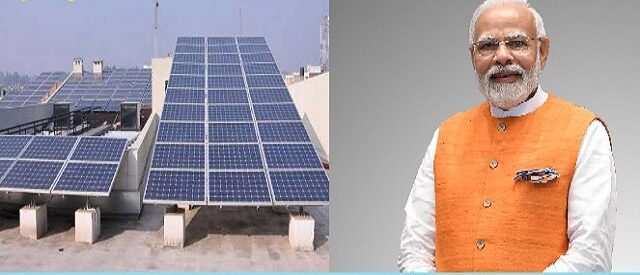After the dedication ceremony of the Ram temple in Ayodhya, Prime Minister Narendra Modi returned to his home on January 22. His first order of business, he said, would be to launch a program to cover one crore homes with solar panels.
“Our government will launch ‘Pradhanmantri Suryoday Yojana,’ with the target of installing solar rooftops on 1 crore houses,” Modi said in a social media post on X, formerly Twitter, after returning from Ayodhya.
“The arrangement would not just decrease the electrical consumption of those in the middle class and poor but will additionally render Indian self-sufficient in the renewable energy sector,” the leader of India said. “The awakening of Suryavanshi Lord Shri Ram is a source of inspiration for all followers throughout the whole globe, he stated.
“Today, on the fortunate day of consecrated in Ayodhya, my commitment got strengthened further that the residents of India should have installed their renewable rooftop technology on the roof that covers their houses,” Modi said.
A number of industry players expressed their satisfaction with the prime minister’s remarks.Neeraj Kuldeep, Senior Programme Lead at the Council on Energy, Environment and Water (CEEW), claims that rooftop solar power installations in India have huge unrealized potential. In theory, Indian households could install over 640 GW of rooftop solar panels, according to a new study by the CEEW.
Rooftop solar systems installed by around 7-8 lakh residences under the government’s capital subsidy program have contributed to the roughly 4 GW of solar electricity that has been achieved so far.
Achieving a tipping point in the rooftop solar market requires today’s announcement to solarize 1 crore dwellings. Adding another 20-25 GW of solar capacity is possible when the number of residences powered by solar climbs by 12-14%. Our power discoms’ bottom lines will improve and governments will be able to cut costs on energy subsidies, says Kuldeep.
Residential solar adoption will see a meteoric rise in the next years, according to SolarSquare CEO Shreya Mishra, who cites a combination of a supportive legislative environment, increased subsidies, and simplified solar permit processes.
The high degree of consumer interest in going solar in India, according to Mishra, will soon make it one of the most advanced domestic solar markets, right up there with Brazil, Germany, and Australia.
If India achieves its renewable energy targets, a recent projection by the global energy think tank Ember indicated that by 2032, solar and wind power will have contributed two-thirds to the rise in power production.
There has been significant technological advancement since 2017, when solar power accounted for only 1% of India’s total electricity generation. From 2022–2032, during a period of enormous expansion, India’s contribution is predicted to surge from 5% to 25% if the country accomplishes the solar goals outlined in the 14th National Electricity Plan (NEP14).
As shown by Ember’s analysis, India may shift its power producing growth from coal to renewable sources like wind and solar in the next decade if it stays dedicated to meeting its NEP14 objectives.

